During our bike journeys around the city, we stopped at Paloquemao, Bogotá’s second-largest and oldest food market. It’s housed in a large tin building, likely to protect food from the torrential rains that happen periodically without warning. It was here that we experienced an unrestrained orgy of superfruit that the rest of the world has not yet put in a bottle.
I’d love to be able to claim superior knowledge of the world of fruit… to be able to say that my journeys led me to the markets of the world and that I’m easily able to recognize the vast number of varieties that exist on different continents.
The truth is: 10-minutes into sampling in Paloquemao, I was lost. There are so many different types, flavours, varieties, and Spanish names… it’s really a delicious problem to have; and honestly, I don’t think I’ve been to a country with so many options. As another cyclist commented, about 15-minutes into the market tour we had enough vitamin C to last a lifetime.
Here is a SMALL sampling of the highlights; all fruit listed below are native to Colombia:
Granadilla, sweet granadilla, or Grenadia
Some say that these are the same as Australian and African passionfruit… but I’m not convinced because there are a lot of subtle differences between the two. Granadillas are high altitude fruit and originate in the Andes (Bolivia, Venezuela and Colombia). The easiest way to eat it is to cut it in half, stir the insides up with a spoon, and eat everything inside including the seeds. It tastes like tart citrus and the skin between the rind and the fruit makes it rather tricky to navigate.
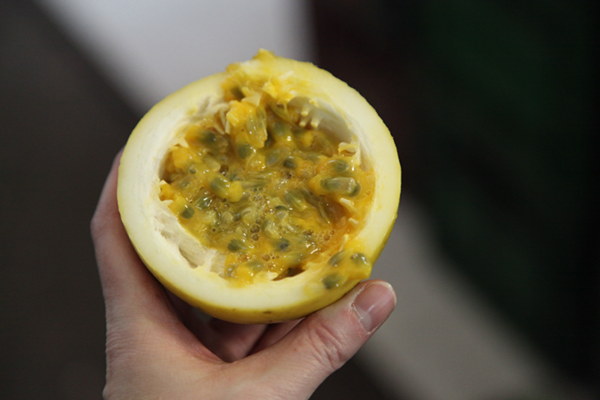
Uchuva or ground cherries
These little prolific cherries have certainly found there way around the world. Per Wikipedia, they have more names than I am able to remember: Cape gooseberry (South Africa), Inca berry, Aztec berry, golden berry, giant ground cherry, African ground cherry, Peruvian groundcherry, Peruvian cherry, pok pok (Madagascar), poha (Hawaii), ras bhari (India), aguaymanto (Peru), uvilla (Ecuador), uchuva (Colombia), harankash (Egypt), Love in a cage (France), and sometimes simply Physalis (United Kingdom).
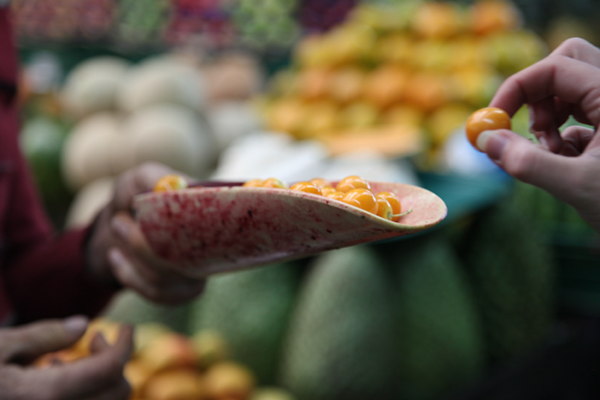
Guanabana
In São Paulo, I had a mysterious white drink that I originally thought contained milk. As it turns out, this was Guanabana and is extremely popular for drinks in South America. When not blended, the taste reminded me of Dubble Bubble bubblegum.
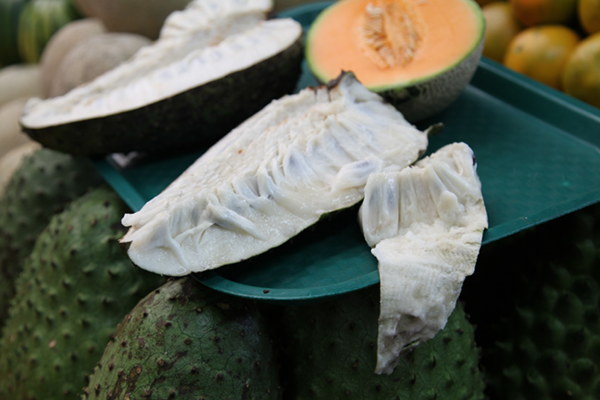
Pitalla, pitaya, pitahaya or Dragon Fruit
You can find these all over the world in a variety of different colours and sizes. We experienced pitahaya amarilla. Not sure if this is true or not, but another traveller told me that pitahaya is an excellent cure for constipation… better than prunes.
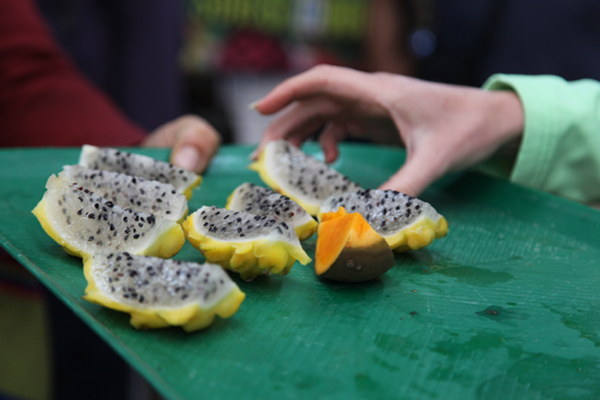
Lulo, naranjilla, or little oranges
This beloved Columbian fruit originates from northwestern South America. It looks like a tomato, but tastes like a lime; it’s often used in drinks and turns green when blended. Lulo is surprisingly delicate and needs very specific growing conditions.
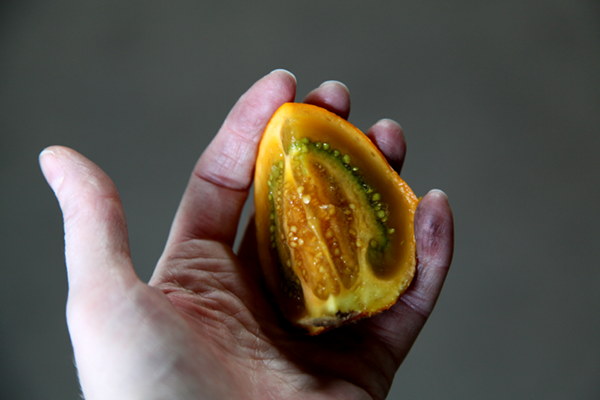
Feijoa, pineapple guava and guavasteen
The green fruit is a Feijoa. To the left is Papaya (yum) and to the right might be guava. It’s difficult to tell. The Feijoa was first discovered by botanists in Brazil. It’s technically not guava though the common name suggests it is.

Paloquemao has more than just fruit. There’s fish, meat, eggs, quail eggs, cheese, candy, bread, etc. The guys that work the fish market are incredibly friendly and more than willing to explain everything about fish, answer questions, and do and show crazy things.
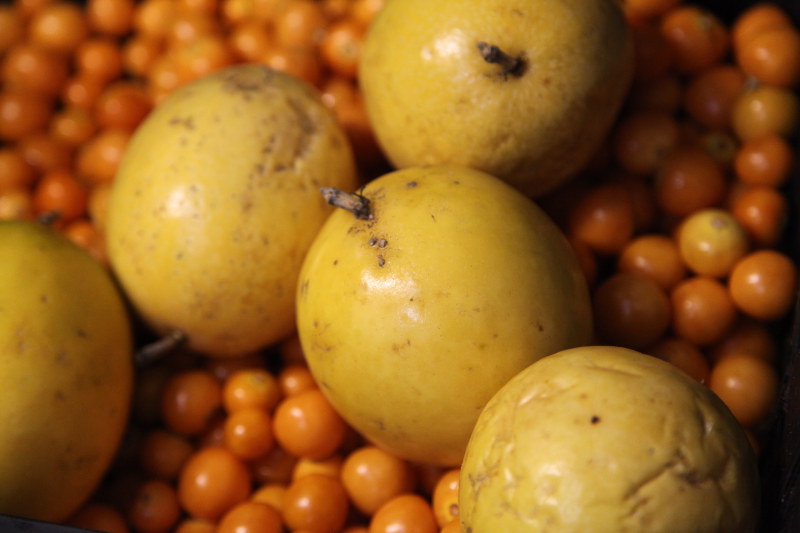
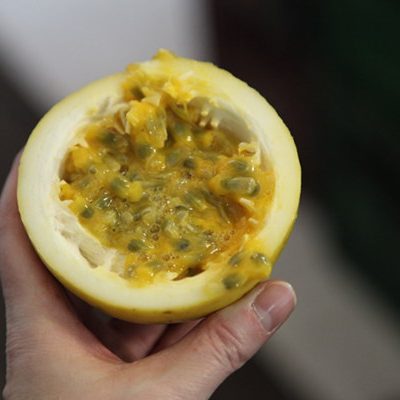
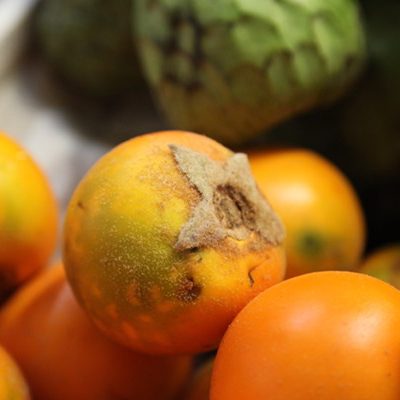
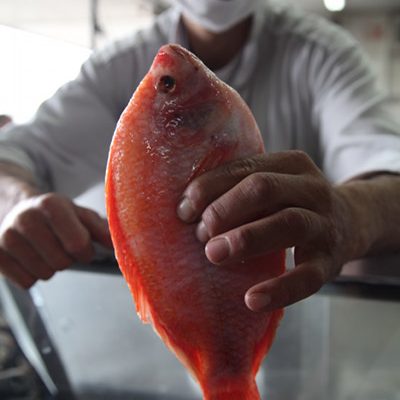

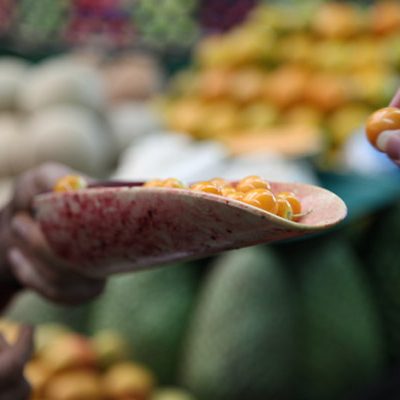
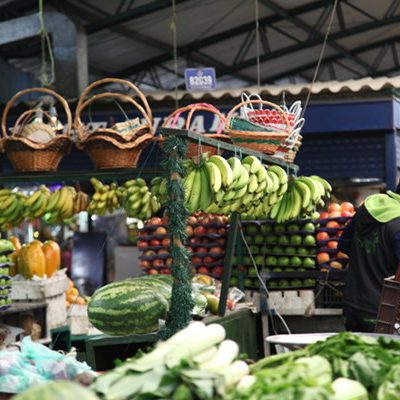
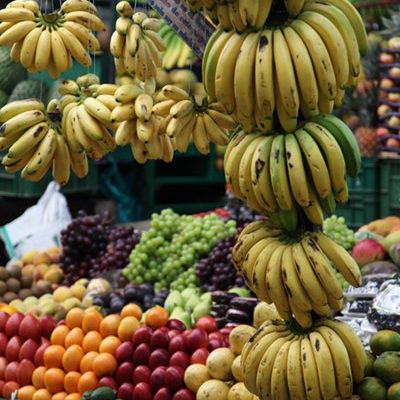
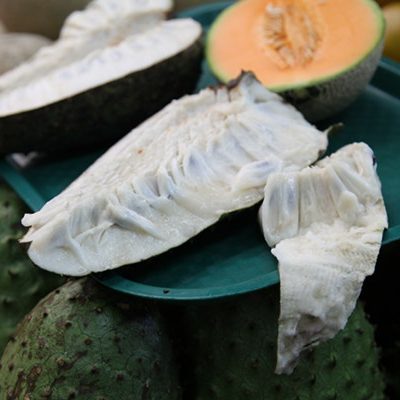
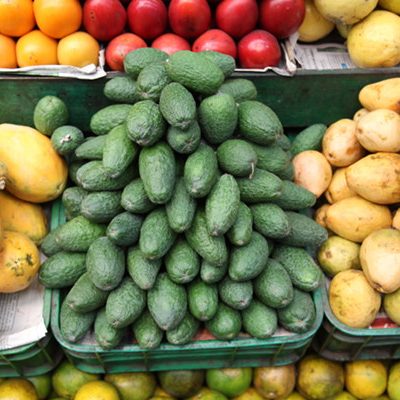
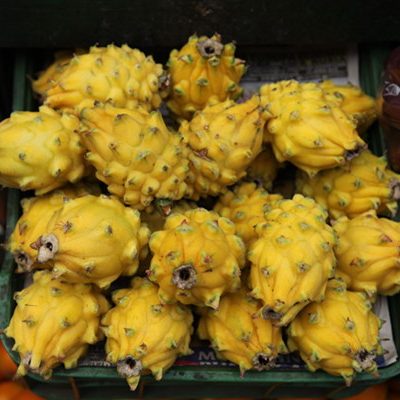
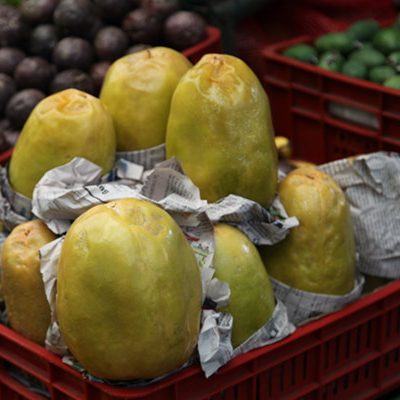
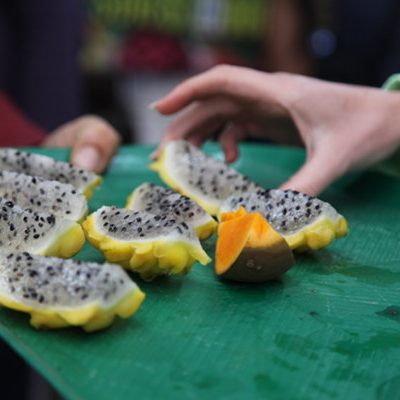
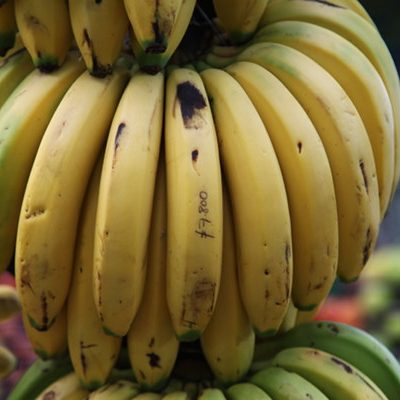
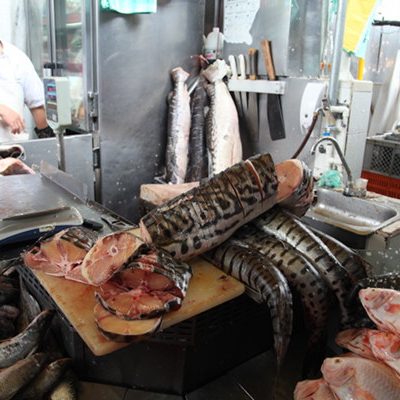
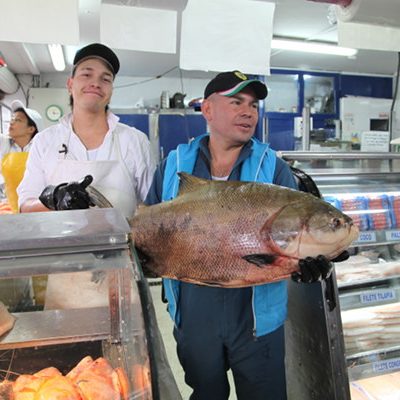
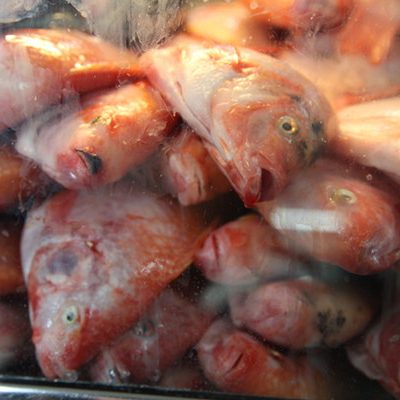
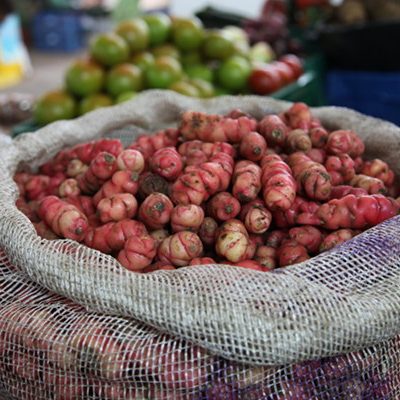
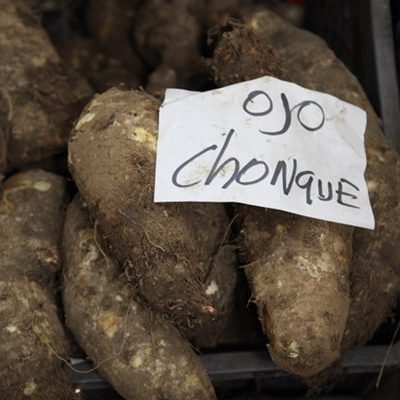
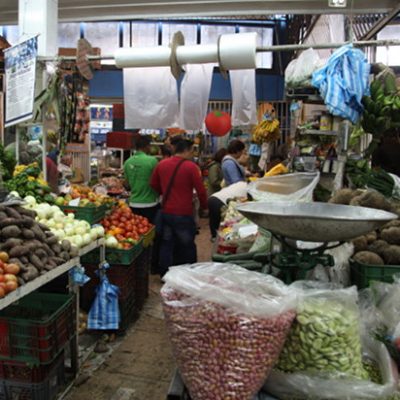
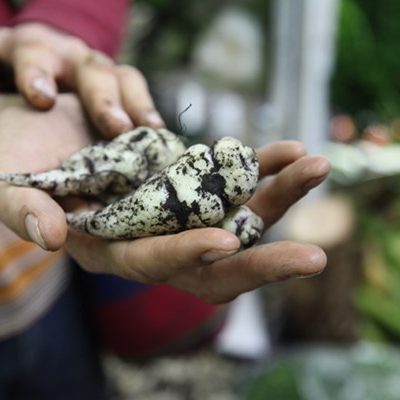
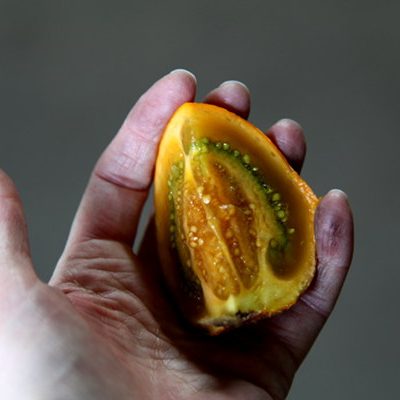
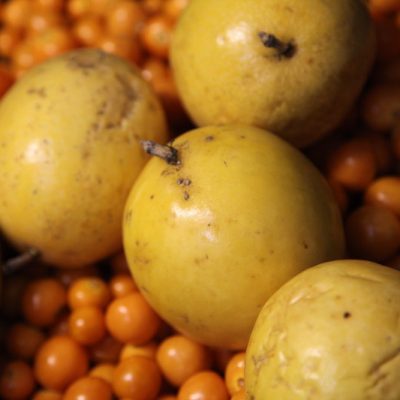
Ground cherries are called Cape Gooseberries here in NS and are a closer relative to the tomato. With their sweet pineapple-like flavour these berries that are easy to grow are high in protein, vitamin C, A and B12. Great in salads, berry crisps and pies or even in trail mixes. I will be trying them in my garden this coming year.